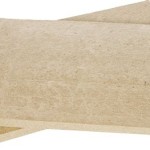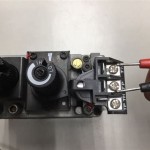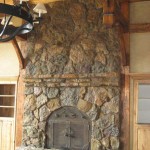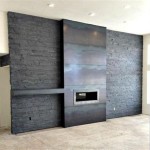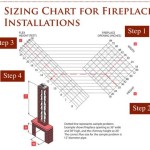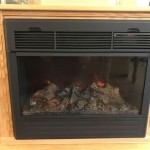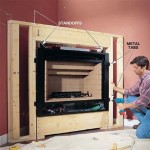Replacing A Fireplace Insert
Replacing a fireplace insert is a significant undertaking that can enhance both the aesthetic appeal and functional efficiency of a home's heating system. A fireplace insert is essentially a self-contained heating appliance designed to fit within an existing masonry fireplace. Over time, these inserts can become outdated, inefficient, or damaged, necessitating replacement. The process involves careful planning, selection of a suitable replacement, and meticulous installation. Understanding the steps involved and the associated considerations is crucial for a successful outcome.
The primary motivation for replacing a fireplace insert often stems from a desire to improve heating efficiency. Older inserts may lack modern features such as catalytic combustors or advanced air intake systems, resulting in significant heat loss up the chimney. Replacing an inefficient insert with a newer, more efficient model can significantly reduce heating costs and improve the overall comfort of the home. Furthermore, technological advancements have led to cleaner-burning inserts, reducing emissions and contributing to a healthier environment. Another reason for replacement might be aesthetic. Older inserts may have a dated appearance, and replacing them with a more contemporary design can revitalize the look of the fireplace and the room it occupies.
Assessing The Existing Fireplace and Chimney
Before embarking on the replacement process, a thorough assessment of the existing fireplace and chimney system is paramount. This assessment should include a visual inspection of the firebox, the chimney flue, and the surrounding masonry. Look for signs of damage such as cracks, spalling, or deterioration of the mortar joints. These issues must be addressed before installing a new insert to ensure the structural integrity and safety of the fireplace. The dimensions of the firebox opening also need to be accurately measured to ensure that the new insert will fit properly. It is highly recommended to engage a qualified chimney sweep or a certified fireplace installer to conduct this assessment. They can identify potential problems and provide recommendations for necessary repairs or modifications.
The chimney flue plays a crucial role in venting combustion gases safely and efficiently. The existing flue liner may need to be inspected for cracks or deterioration. If the existing flue liner is damaged or incompatible with the new insert, it may need to be replaced or relined. Local building codes and manufacturer specifications often dictate the type of flue liner required for specific fireplace inserts. For example, gas fireplace inserts typically require a different type of flue liner than wood-burning inserts. Improper flue sizing or liner material can lead to dangerous conditions, such as carbon monoxide poisoning or chimney fires.
In addition to the physical condition of the fireplace and chimney, it is also important to consider any existing gas lines or electrical connections. If the new insert requires gas service or electrical power, ensure that the existing utilities are adequate and that they meet all applicable safety codes. If upgrades are needed, it is essential to hire a qualified plumber or electrician to perform the work.
Selecting a Replacement Fireplace Insert
Choosing the right replacement fireplace insert involves careful consideration of several factors, including fuel type, heating capacity, efficiency, and aesthetic appeal. Fireplace inserts are available in various fuel types, including wood, gas, and electric. Wood-burning inserts offer a traditional ambiance and can be a cost-effective heating option, especially if wood is readily available. Gas inserts provide convenience and ease of use, with the ability to control the flame and heat output with a thermostat. Electric inserts are the easiest to install and operate, but they typically provide less heat than wood or gas models.
The heating capacity of the insert should be appropriately sized to match the heating needs of the space. This is typically measured in British Thermal Units (BTUs). An undersized insert will struggle to heat the room effectively, while an oversized insert may cycle on and off frequently, leading to inefficient operation and discomfort. Factors such as the size of the room, the insulation levels, and the climate should be considered when determining the appropriate BTU output. Consult with a fireplace professional or use online sizing calculators to estimate the required heating capacity.
Energy efficiency is another important consideration. Look for inserts with high efficiency ratings, such as those certified by the Environmental Protection Agency (EPA). More efficient inserts will burn fuel more completely, producing more heat and fewer emissions. This can translate into lower heating costs and a reduced environmental impact. The aesthetic appeal of the insert should also be taken into account. Choose a design that complements the style of the room and reflects your personal preferences. Fireplace inserts are available in a wide range of styles, from traditional to contemporary, with various finishes and features.
Installing the New Fireplace Insert
Proper installation is crucial for the safe and efficient operation of a fireplace insert. While some homeowners may consider DIY installation, it is generally recommended to hire a certified fireplace installer. Professional installers have the expertise and experience to ensure that the insert is installed correctly and in compliance with all applicable codes and regulations. The installation process typically involves several steps, including preparing the fireplace opening, connecting the flue liner, installing the insert, and connecting any necessary gas or electrical utilities.
Preparing the fireplace opening involves cleaning the firebox and ensuring that it is free of debris. Any necessary repairs to the masonry or flue should be completed before proceeding with the installation. The flue liner needs to be properly connected to the insert and sealed to prevent leaks. This is typically done using a connector pipe or a flexible liner. The insert is then carefully positioned inside the firebox and secured in place. The clearances to combustible materials must be maintained to prevent fire hazards.
If the insert requires gas or electrical connections, these should be performed by qualified professionals. Gas lines must be leak-tested to ensure that they are properly sealed. Electrical connections must be made in accordance with local codes and regulations. Once the installation is complete, the insert should be thoroughly tested to ensure that it is operating correctly. This includes verifying the proper operation of the ignition system, the blower fan, and any other features. It is also important to read the manufacturer's instructions carefully and follow the recommended maintenance procedures to ensure the long-term performance and safety of the fireplace insert.

How To Install A Fireplace Insert Diy Save Money

Best Fireplace Insert Repair Installs Ton Service

Custom Installation Of Fireplace Inserts Insert Installations Sierra Hearth And Home
How To Install An Electric Fireplace Insert

Wood Fireplace S Installation Chimney Sweeps Of America

Lodi Wi Installing Fireplace Insert Remodel

Convert To Gas Installing Fireplace Inserts Doctor Flue
Wood Stoves And Fireplaces How To Install A Burning Fireplace Insert Hearth Com Forums Home
How To Install Gas Fireplace Insert Heat Glo

Fireplace Insert Installation Step By Forbes Home

